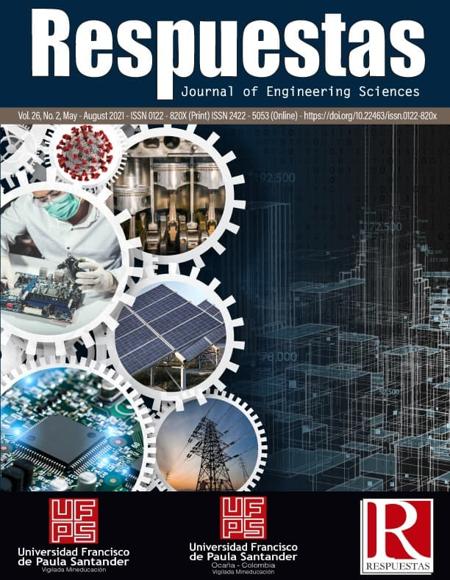A study on self-leadership, entrepreneurial self-efficacy and innovation in the generation of Centennials in FESC students
Un estudio sobre el autoliderazgo, la autoeficacia emprendedora y la innovación en la generación de los Centennials en estudiantes de la FESC
Main Article Content
At present, perceiving what current and future employees consider most important can be difficult when those expectations are changing due to globalization, competitiveness and the same market, the business sector has been affected. Therefore, the target population was university students belonging to a generation known as Centennials or Z, who seek new trends, environments and work independence, which is why many of them undertake. The present work validated the influence of three variables: self-leadership, entrepreneurial self-efficacy and innovation in students of the Fundación de Estudios Superiores Comfanorte in Colombia, obtaining preliminary results using statistical analysis software (SmartPLS).
Downloads
Article Details
T. Nichols and M. Wright, “Generational differences: understanding and exploring generation Z”, Southwest Academy of Management Proceedings, 2018.
C. De la Serna, "La generación que ya está cambiando al mundo", in World Economic Forum, 2018I. Bedrow and F. T. Evers, “Bases of competence: an instrument for self and institutional assessment. Assessment & Evaluation in Higher Education”, Journal of management education, vol. 35, no. 4, pp. 419–434, 2010.
J. Salinas, “Innovación docente y uso de las TIC en la enseñanza universitaria”, Revista de Universidad y Sociedad del Conocimiento, vol. 1, no. 1, pp. 1-16, 2004.
M. Dutra, “Generación Z: entre las nuevas formas de organización del trabajo y la convivencia generacional " tesis, Universidad de la República, Uruguay, 2017.
E. Durán-Aponte and D. Arias-Gómez, “Intención emprendedora en estudiantes universitarios: integración de factores cognitivos y socio-personales.” Revista Colombiana de Ciencias Sociales, vol. 6, no. 2, pp. 320-340, 2015.
E. Durán-Aponte and D. Arias-Gómez, “Actitud emprendedora y estilos emocionales. Contribuciones para el diseño de la formación de futuros emprendedores” Gestión de la educación, pp. 83-102, 2016.
OECD, “Self-employment rate (indicator)”, Doi: 10.1787/fb58715e-en, 2020.
J. Bessant, S. Caffyn and M. Gallagher, “An evolutionary model of continuous improvement behaviour”, Technovation, vol. 21, no. 2, pp. 67–77, 2001.
P. W. Hyland, and T. Sloan, "Performance measurement and continuous improvement: are they linked to manufacturing strategy", International Journal of Technology Management, vol. 37, no. 3, pp. 237-333, 2007.
C. M. De Benito Valencia, “La mejora continua en la gestión de calidad: seis Sigma, el camino para la excelencia”, Economía industrial, no. 331, 2000. ISSN: 0422-2784.
I. Bedrow and F. T. Evers, “Bases of competence: A framework for facilitating reflective learner-centered educational environments”, Journal of management education, vol. 35, no. 3, pp. 406–427, 2011.
J. A. Moriano, F. J. Palací and J. F. Morales, “Adaptación y validación en España de la escala de Autoeficacia Emprendedora”, Revista de Psicología Social, vol. 21, no. 1, pp. 51-64, 2006.
C. M. Salvador, “Impacto de la inteligencia emocional percibida en la autoeficacia emprendedora”, Boltín de psicología, no. 92, pp. 65-80, 2008.
D. J. Houghton and C. P. Neck, “The revised self leadership questionnaire: Testing a hierarchical factor structurefor self leadership”, Journal of Managerial Psychology, vol. 17, no. 8, pp. 672-691, 2002.
J. A. Marin-Garcia, L. E. Aznar-Mas and F. González Ladrón de Guevara, “Innovation types and talent management for innovation”, Working Papers on Operations Management, vol. 2, no. 2, pp. 25–31, 2011.
FESC (Fundación de Estudios Superiores Comfanorte). Reseña en línea, https://www.fesc.edu.co/portal/
J. Hair, C. L. Randolph and A. Y. Chong, “Industrial Management & Data Systems”, An updated and expanded assessment of PLS-SEM in information systems reserch, vol. 117, no. 3, pp. 442-458, DOI: 10.1108/IMDS-042016-0130.
C. Fornell and D. F. Larcker, “Evaluating structural equation models with unobservable variables and measurement error”, Journal of marketing research, vol. 18, no. 1, pp. 39-50, 1981.
J. Henseler, G. Hubona and P.A. Ray, “Using PLS path modeling in newtechnology research: Updated guidelines”, Industrial management and data systems, vol. 116, no. 1, pp. 2-20, 2016, DOI: 10.1108/IMDS-092015-0382.
J. C. Nunnally, “Pdychometric theory 3E”, Tata McGraw-hill education, 1994.
J. F. Hair, G. T. Hult, C. Ringle and M. Sarstedt, “A Primer on Partial Least Squares Structural Equation Modeling (PLS-SEM)”, Sage: California, 2014, DOI: 10.1016/j.jfbs.2014.01.002.


